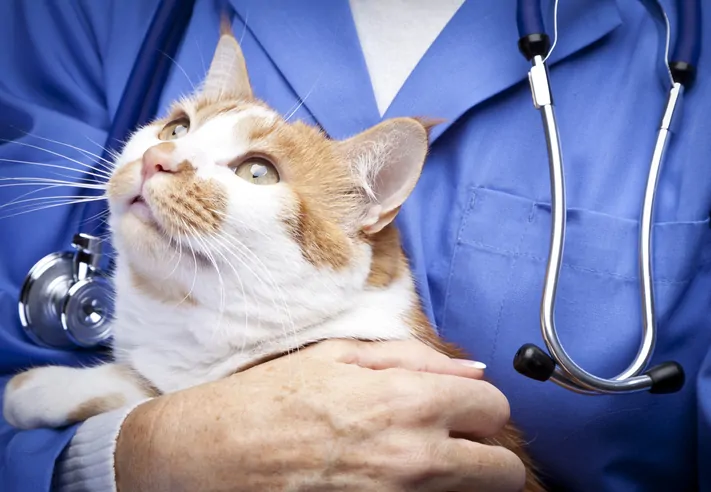Urinary tract infections, or UTIs, in cats can be excruciating and, if left untreated, can lead to severe complications. Therefore, it's important to keep an eye out for the symptoms of urinary tract infections in cats. Common signs and symptoms you may notice in your cat include:
Urinary tract symptoms are common in cats, especially if they are 10 years or older. Though, we see cases anywhere from 2 years old and on. The urine in your cat's bladder should be sterile, but if bacteria get into the bladder, they can multiply and spread throughout the urinary tract, causing infection, however, such cases are rare.
Endocrine disease contributes to the majority of urinary tract infections in cats and is characterized by the overproduction or underproduction of hormones by the endocrine glands. A disordered adrenal gland, thyroid gland, or pancreas can cause your cat to have excessive thirst, frequent urination, and dehydration.
Low-level, chronic dehydration increases the chance of your cat developing a urinary tract infection because a dehydrated urinary tract allows bacteria to develop and reproduce more efficiently. Kidney failure later in your cat's life may be connected to persistent or untreated urinary tract infections.

Feline lower urinary tract disease, or FLUTD, is a general term that covers a wide range of urinary tract symptoms, which are very common. With FLUTD, crystals, stones, or debris can slowly accumulate in your cat's bladder or urethra, resulting in an obstruction that can impede bladder emptying. If neglected, these illnesses can become serious or even fatal.
For cats with FLUTD, urinating might be difficult, uncomfortable, or even impossible. Additionally, they can urinate more frequently or improperly outside of their litter box (occasionally on surfaces that are cool to the touch such as a tile floor or bathtub).
Although cats of any age can get feline lower urinary tract disease, it's most common in cats that are overweight and middle-aged who have limited to no access to the outdoors, eat a dry food diet, or do not get enough physical activity. Because their narrower urethras are more likely to become obstructed, male cats are more vulnerable than female cats to developing a urinary disease.
Whether your cat has a UTI or FLUTD, both conditions require veterinary care. Contact your veterinarian or the closest emergency vet right away if your cat is struggling to urinate or howling in agony as your cat may be having a medical emergency.
Your veterinarian will conduct a thorough physical examination to help determine how your cat is feeling and will conduct a variety of tests to learn what is causing your cat's urinary tract symptoms, such as:
Some tests may take longer to perform than others so your veterinarian may prescribe a broad-spectrum antibiotic to start your cat on until the results come in. Once all the test results are completed, your vet will provide you with a more targeted treatment plan for your cat.
Once your vet has identified the exact cause of your cat's urinary symptoms and prescribed a treatment plan, it's important to follow their instructions precisely and give all prescription medications as directed and on time. Making sure your cat has plenty of water close by during recovery and making vet-recommended changes to their diet may also speed the recovery process.
Phone: (855) 461-8259
Email: [email protected]